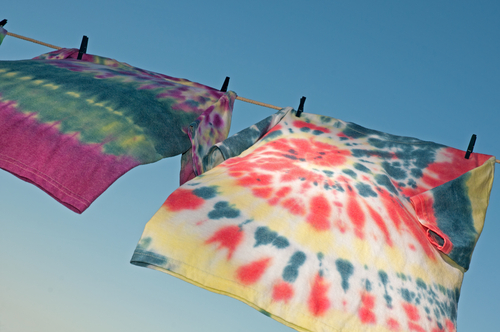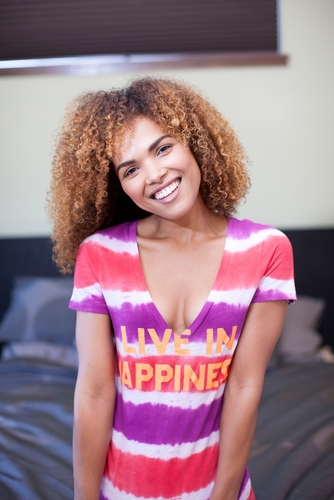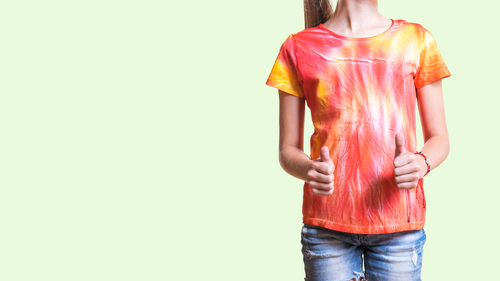Wet vs. Dry Tie Dye: Which One Is Better?
If you are one of the many people who the tie dye bug has recently bitten, you have undoubtedly seen several different methods and techniques for dyeing various garments and household textiles. One of the big questions, though, is whether you should dye wet shirts or dry. It seems like just about everyone has a strong preference for one or the other, but figuring out which method truly reigns supreme can be tricky.

Source: Nancy Bauer/Shutterstock.com
Whether you are making tie dye shirts from old clothes in your closet or have purchased bulk wholesale t-shirts specifically for this project, keep reading to learn a bit more about which method is better.
Wet Tie Dye
There are lots of different tie dye methods and even more opinions regarding which way is best. In most cases, wet tie dye is your best bet. It is crucial to make sure that the fabric is not too wet, though.
A slightly damp shirt offers the best combination of dye control and malleability. The slight dampness makes the fabric easy to fold and allows the dye to flow freely but not too quickly. A bit of moisture also helps the fabric stick in place, which is helpful when trying to fold and twist to create complex patterns.
Damp shirts are easy to dye, even for beginners. Having a small amount of water in the fabric enables the dye to penetrate the fibers and spread nicely. This makes it easier to blend colors on the shirt and results in consistent, smooth coloration.
Dry Tie Dye

Source: Image Source Trading Ltd/Shutterstock.com
While wet tie dye is usually your best bet, tie dyeing dry fabric does have its perks. It is not without challenges, though. Dry cloth tends to be springy and difficult to fold into place. It does not stay in place, so it can seem next to impossible to fold and tie a dry t-shirt or another garment. If you are thinking about trying to dye a dry shirt, the best option is to fold and secure it while it is wet and then let it dry.
Dye penetrates dry fabric differently than wet or damp fabric. Without the added moisture, it spreads much less. Sometimes, this is a negative thing. In other cases, though, it can be beneficial. Because the dye spreads less, it is easier to control its placement on the fabric. This is great, of course, when you want to prevent colors from blending and have more control over exactly where each color ends up.
Which Is Better?
In most cases, wet tie dye is better than dry tie dye. This is especially true for beginners, simply because it is a more straightforward process. When you are trying to make a tie dye shirt with clear separations between colors, dyeing a dry garment may be a better option.
If you decide to use the wet method, the most important thing to remember is not to make the fabric too wet. While soaking wet fabric is easy to fold and manipulate, it does not accept the dye as well. Cotton and other fibers can only hold so much liquid. If your shirt is fully saturated, the dye may sit on the surface rather than soaking in. This could result in white spots or a less vibrant appearance.
When it comes to deciding between wet and dry tie dye, it works best to go with the middle ground and use a damp t-shirt rather than one that is fully wet or dry.
Taking Care of Your Tie Dye Apparel
No matter what method you use, knowing how to care for your tie dye apparel is vital in ensuring that the finished product remains in great shape. Tie dye clothing needs to be laundered with care to prevent fading.
Learn How to Wash a Tie Dye Shirt
The Bottom Line

Source: VLADIMIR VK/Shutterstock.com
Making tie dye shirts, hoodies and other apparel and household accessories is a fun way to pass a lazy springtime afternoon. It is also a great way to express your creativity and make one-of-a-kind clothing to wear or give as gifts.
Whether you are a beginner or a more experienced dyer, dyeing damp shirts is generally the easiest and most effective method. There are, however, situations where dry tie dye works well. Stock up on bulk t-shirts from The Adair Group and you will have plenty of apparel with which to experiment!


